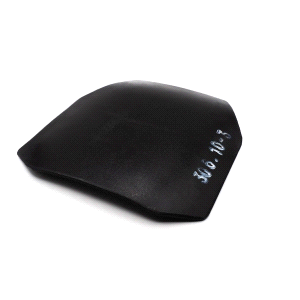Armor material: a balance between protection and weight
Amsterdam, NL - October 22, 2021 -
Armor material has evolved significantly throughout the decades both in terms of technology and concept of use. It has been a continual battle between weapons’ capabilities on the side and striking a balance between protection and weight increase on the other. Active protection systems being increasingly used to tackle the size, weight and power issues associated with more amor.
However, protecting lives in the modern battlefield has become a priority during the recent wars, with modern militaries increasingly investing in bullet-proof protective equipment for their soldiers.
The wars in Afghanistan and Iraq had provided an incentive for vehicle manufacturers and components’ supplier to develop platforms that would increase crew protection and also provide optimum mobility and physical dimensions to operate in a wide variety of combat scenarios.
The growth in material science engineering and the development of lightweight armor materials is one of the key drivers for this market. The development of materials like Kevlar and Dyneema for soldier protection systems is expected to increase the ballistic protection capabilities of a soft armoured vest.
Investments in research and development within the aerospace and defense sector are driving growth in this market. The US is an example, as the Jo Biden administration decided to slash procurement to redirect funds in R&D. Following 2021 next year’s budget appropriations, include a reduction of procurement by US$8 bn with R&D increasing by US$5.5 bn. The increased geo-political tension between China and the US is one of the factors that has led to this proposition.
Civilian armor is another segment which is anticipated to register a promising growth for this market. The expanding use of armoured automotives within the commercial automobile sector is a key factor that bolsters the growth associated with this sector. Additionally, the development of products like civilian body armor is expected to drive market growth.
The Armored Materials market is majorly reliant on the defense spending for a nation. For instance, the economical downturn caused by the pandemic caused defense budgets to slashed which in turn led to a reduced procurement. The gradual recovery of the economy is expected to be one of the key challenges to be encountered by this market. The gradual rise of post-pandemic GDPs is expected to increase defense spending for the nations.
The Armor Materials Market in 2020 is estimated at US$8.30 bn and is expected to reach US$15.5 bn by 2029 according to the Armor Materials - Market and Technology Forecast to 2029” study by Market Forecast. The growth rate for this sector is recorded to be 6.10% during the forecast period and North America is expected to account for the largest market share followed by APAC.

Related Studies
